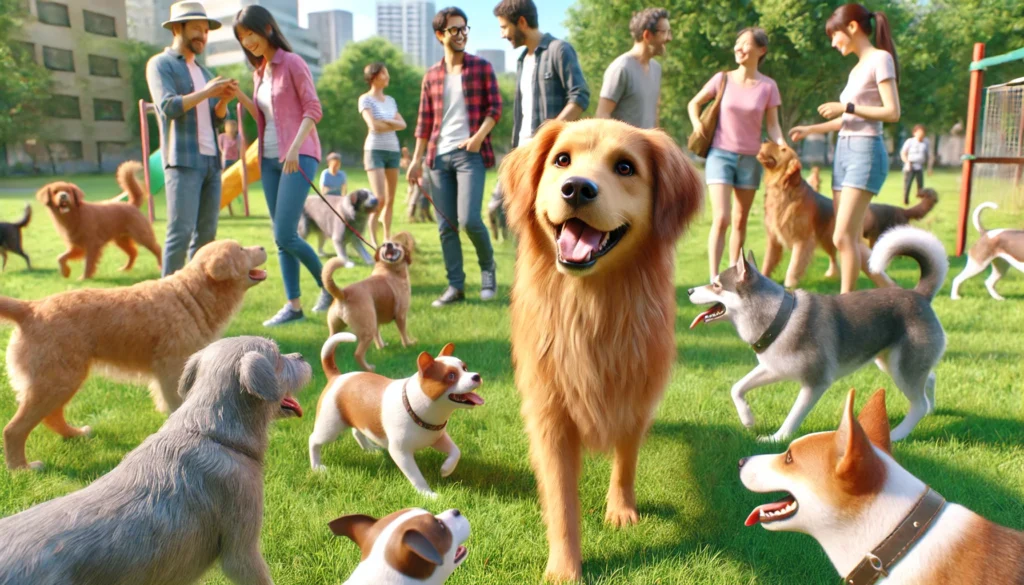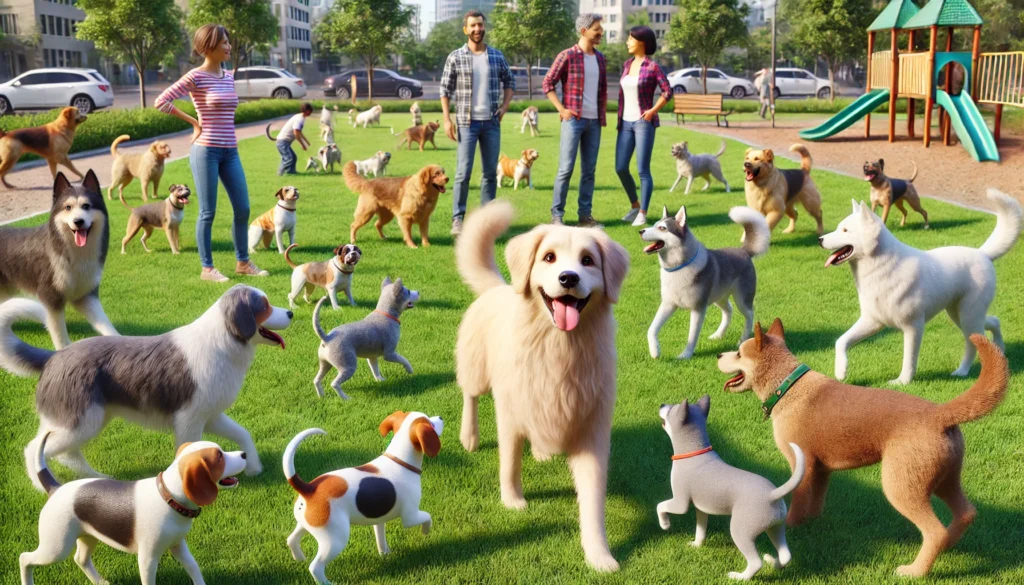Socializing your dog with other animals and people is a key step in ensuring he is well-adjusted, happy and healthy. Have you ever stopped to think about the importance of this skill? A well-socialized dog is less likely to develop problematic behaviors, such as aggression or excessive fear, as well as being easier to deal with in various everyday situations. Let's embark on this journey and explore the best practices for socializing your dog, with practical and effective tips from an expert veterinarian. After all, who doesn't want to see their furry friend having fun and interacting harmoniously with everyone around them?
The Importance of Socialization for Dogs
Socializing a dog goes far beyond just allowing him to be in the presence of other animals and people. It's about creating positive experiences that will help your dog develop confidence and appropriate social behaviors. This is especially crucial during the socialization period, which occurs between 3 and 14 weeks of age. However, even adult dogs can be successfully socialized, although the process may require more patience and consistency.
Preparing the Ground: Gradual Introduction
Gradual introduction is the key to successful socialization. To begin, introduce your dog to new environments, sounds and smells in a controlled manner. Additionally, use rewards such as treats and praise to reinforce calm, positive behaviors. So a quiet park or fenced-in backyard can be a great starting point.
Positive Interactions with Other Dogs
For many dogs, interactions with other canines are essential. However, these interactions must be carefully monitored. For example, choose dogs that are known for their friendly, calm demeanor for first introductions. Additionally, always supervise interactions and be ready to intervene if you notice any signs of discomfort or aggression.
Importance of Obedience Training
Obedience training not only teaches basic commands, but also helps establish a clear line of communication between you and your dog. For example, commands like “sit,” “stay,” and “come” are useful for controlling social situations and ensuring your dog remains safe and obedient.

Exposure to Various Situations
Variety is essential. Therefore, expose your dog to different situations, such as car rides, visits to the veterinarian, encounters with children and people of different ages and appearances. This way, it will help your dog to generalize his social skills and adapt better to any situation he may encounter.
Dealing with Fears and Anxieties
Not all dogs react the same way to new experiences. Some may show fear or anxiety. It's crucial not to force your dog into interactions that make him uncomfortable. Instead, work gradually to build trust. Additionally, products such as synthetic pheromones and positive reinforcement techniques can be helpful.
Socialization with Other Animals
In addition to dogs, it is important to socialize your dog with other species of animals, especially if you have other pets at home. For example, cats, rabbits and even birds can be introduced in a controlled way. Initially, keep encounters short and use physical barriers, such as fences or gates, to ensure the safety of both animals.
Participation in Socialization Classes
Many cities offer dog socialization classes led by professional trainers. These classes are an excellent opportunity for your dog to interact with other dogs in a controlled, supervised environment. Additionally, you will receive expert guidance to deal with any challenges that may arise.
Monitoring Behavior and Progress
Keep a log of your dog's behavior during social interactions. Note any signs of aggression, fear, or discomfort, and adjust your strategies as necessary. Always reward positive behaviors and be patient – socialization is an ongoing process.

Use of Toys and Games
Interactive toys and games are great for encouraging positive behaviors and allowing your dog to expend energy in constructive ways. Therefore, games of fetch, tug, and dog puzzles are excellent options for keeping your dog engaged and happy.
Socialization of Adult Dogs
While socializing an adult dog can be more challenging, it is still perfectly possible. Use the same strategies of gradual introduction and positive reinforcement, and consider working with a professional trainer if you encounter difficulties.
Benefits of a Well Socialized Dog
A well-socialized dog is generally happier, healthier and more balanced. He is less likely to develop problematic behaviors and more capable of dealing with change and new experiences. Furthermore, owners of well-socialized dogs generally enjoy a more harmonious and rewarding relationship with their pets.
Canine Socialization and Mental Health
Socialization also plays an important role in your dog's mental health. Dogs that are frequently exposed to new experiences and social interactions are less likely to develop behavior problems related to stress and anxiety. A well-established socialization routine can help keep your dog mentally stimulated and emotionally balanced.
Practical Tips for Daily Socialization
Include socialization in your dog's daily routine. Daily walks, visits to the park, encounters with other dogs and trips to pet-friendly places are perfect opportunities to continue developing your dog's social skills. So remember to keep the experiences positive and never force your dog into situations that make him uncomfortable.
Conclusion
Socializing your dog with other animals and people is an ongoing process that requires patience, consistency and, above all, love. By following the tips and strategies outlined in this article, you will be on your way to creating a safe and positive environment for your dog. Remember that each dog is unique, and what works for one may not work for another. Therefore, observe and adapt your approaches as necessary, always with your pet's well-being in mind.
FAQs
1 – How can I start socializing my puppy?
A: Start by introducing your puppy to new people and animals in a controlled, positive environment. Use rewards to reinforce calm behaviors.
2 – My adult dog is aggressive towards other dogs. Can I still socialize him?
A: Yes, but it may take more time and patience. Consider working with a professional trainer for best results.
3 – What are the signs that my dog is uncomfortable during socialization?
A: Signs include growling, barking excessively, avoiding eye contact, and trying to move away from the situation.
4 – Should I force my dog to interact if he is scared?
A: No, forcing interactions can make the fear worse. Work gradually to build trust and confidence.
5 – Which toys are best to help with socialization?
A: Interactive toys and dog puzzles are great for stimulating your dog's mind and encouraging positive behaviors.
6 – How often should I socialize my dog?
A: Socialize your dog daily with a variety of experiences to keep his social skills sharp.
